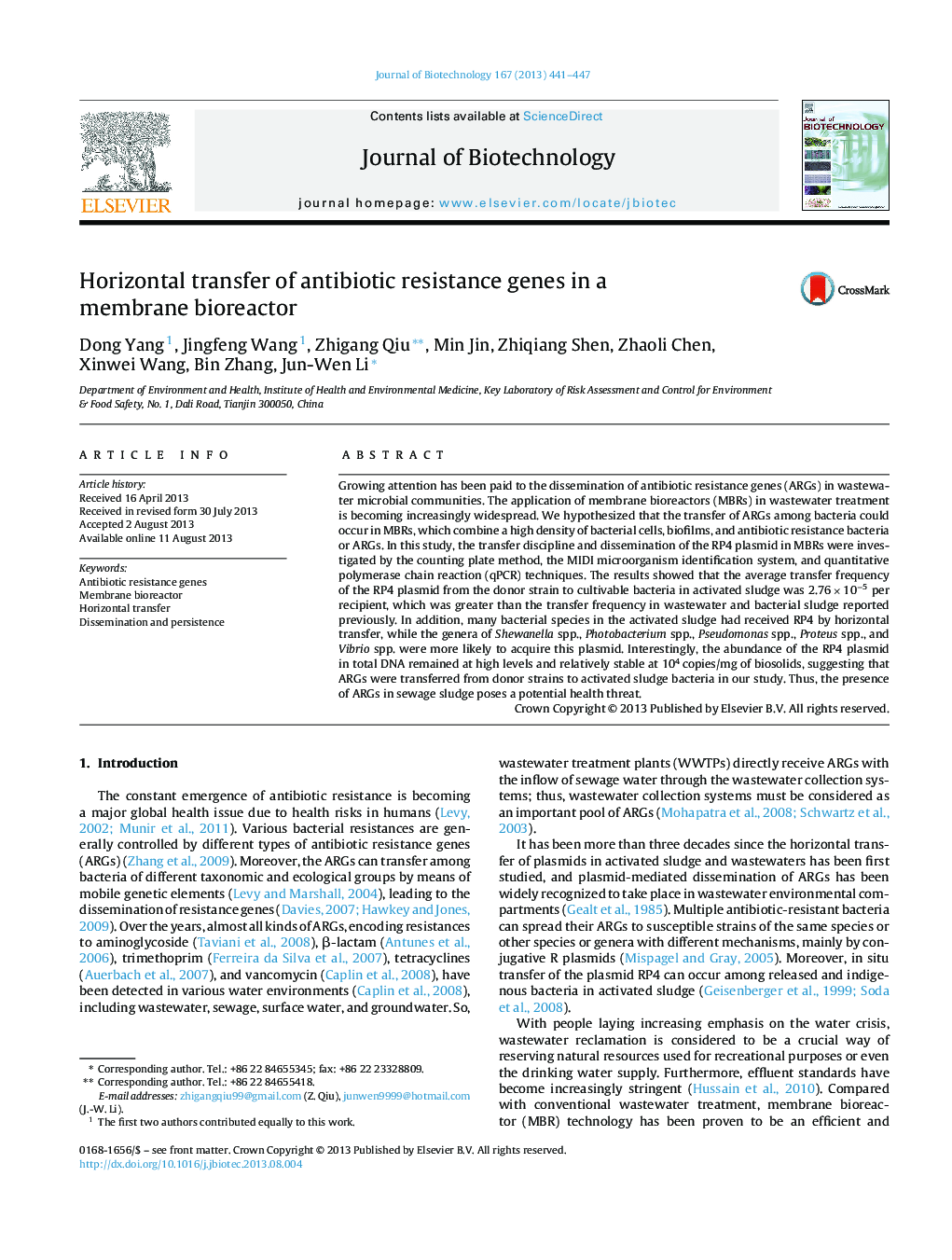| Article ID | Journal | Published Year | Pages | File Type |
|---|---|---|---|---|
| 6491771 | Journal of Biotechnology | 2013 | 7 Pages |
Abstract
Growing attention has been paid to the dissemination of antibiotic resistance genes (ARGs) in wastewater microbial communities. The application of membrane bioreactors (MBRs) in wastewater treatment is becoming increasingly widespread. We hypothesized that the transfer of ARGs among bacteria could occur in MBRs, which combine a high density of bacterial cells, biofilms, and antibiotic resistance bacteria or ARGs. In this study, the transfer discipline and dissemination of the RP4 plasmid in MBRs were investigated by the counting plate method, the MIDI microorganism identification system, and quantitative polymerase chain reaction (qPCR) techniques. The results showed that the average transfer frequency of the RP4 plasmid from the donor strain to cultivable bacteria in activated sludge was 2.76Â ÃÂ 10â5 per recipient, which was greater than the transfer frequency in wastewater and bacterial sludge reported previously. In addition, many bacterial species in the activated sludge had received RP4 by horizontal transfer, while the genera of Shewanella spp., Photobacterium spp., Pseudomonas spp., Proteus spp., and Vibrio spp. were more likely to acquire this plasmid. Interestingly, the abundance of the RP4 plasmid in total DNA remained at high levels and relatively stable at 104Â copies/mg of biosolids, suggesting that ARGs were transferred from donor strains to activated sludge bacteria in our study. Thus, the presence of ARGs in sewage sludge poses a potential health threat.
Related Topics
Physical Sciences and Engineering
Chemical Engineering
Bioengineering
Authors
Dong Yang, Jingfeng Wang, Zhigang Qiu, Min Jin, Zhiqiang Shen, Zhaoli Chen, Xinwei Wang, Bin Zhang, Jun-Wen Li,
